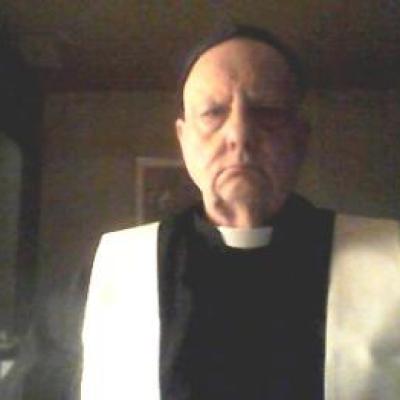


Liturgical day: Sunday II (C) of Lent
Gospel text (Lk 9,28-36): Jesus took Peter, John and James and went up the mountain to pray. And while He was praying, the aspect of his face was changed and his clothing became dazzling white. Two men were talking with Jesus: Moses and Elijah. They had just appeared in heavenly glory and were telling him about his departure that had to take place in Jerusalem.
Peter and his companions had fallen asleep, but they awoke suddenly and saw Jesus' Glory and the two men standing with him. As Moses and Elijah were about to leave, Peter said to him, «Master, how good it is for us to be here for we can make three tents, one for you, one for Moses and one for Elijah». For Peter didn't know what to say. And no sooner had he spoken than a cloud appeared and covered them; and the disciples were afraid as they entered the cloud. Then these words came from the cloud, «This is my Son, my Chosen one, listen to him». And after the voice had spoken, Jesus was there alone. The disciples kept this to themselves at the time, telling no one of anything they had seen.
«Jesus went up the mountain to pray»
Fr, Jaume GONZÁLEZ i Padrós
(Barcelona, Spain)
Today second Sunday in Lent, the liturgy of the word invariably brings us the evangelic episode of the Lord's Transfiguration. This time, with the nuances typical of saint Luke's Gospel.
It is Saint Luke who more strongly emphasizes the praying Jesus, the Son who is permanently linked to the Father through personal prayer, at times intimate, hidden, at times in the presence of his disciples, but always full of joy through the Holy Spirit.
Let's therefore pay attention to the fact Luke is the only one of the synoptics that begins the narration in this way: «Jesus (...) went up the mountain to pray» (Lk 9:28), and, consequently, it is Luke who specifies that the Master's transfiguration happened «while He was praying» (Lk 9:29). And this is not something irrelevant.
The prayer is presented here like the ideal and natural context for the vision of Christ's Glory: when Peter, John and James «awoke (…) and saw Jesus' Glory» (Lk 9:32). But, not only His Glory, but also the glory God had already manifested in the Law and the Prophets; they —evangelist Luke says— «appeared in heavenly glory» (Lk 9:31). For they indeed find their own splendor in the love of the Spirit when the Son speaks to the Father. Thus, in the heart of Holy Trinity, Jesus' Passover, «his departure that had to take place in Jerusalem» (Lk 9:31), is the sign manifesting God's plan, which is carried out in the bosom of Israel's history, until its definite completion, through the death and resurrection of Jesus, the Jesus Incarnated.
It is good to remember, in this Lent and always, that unless we let the spirit of piety to emerge in our life, establishing a familiar and inseparable relationship with the Lord, we shall not be able to enjoy the contemplation of His Glory. It's urgent to be impressed by the vision of the Transfigured face. Our Christian experience has maybe an excess of words while it lacks stupor, that stupor that made Peter and his friends actual witnesses of the living Christ.